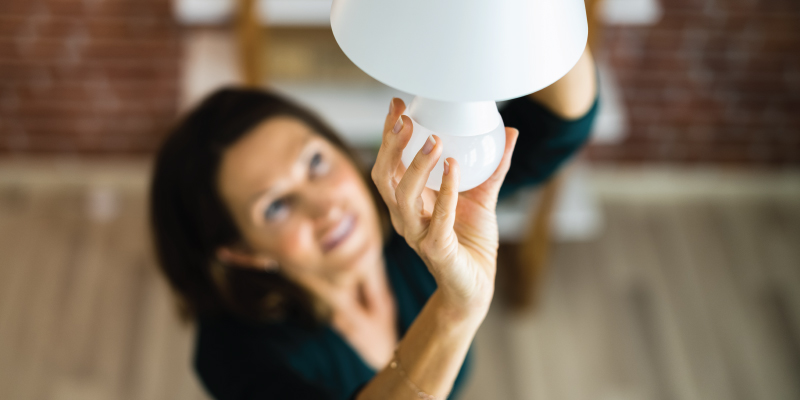6 Steps for a More Energy-Efficient Home
Posted On: March 25, 2024

As a homeowner, you’re probably familiar with the basics when it comes to managing your electricity bills. Good habits like turning off lights when you leave, unplugging unused devices, and other standard energy-saving practices are important when it comes to conserving energy. However, by taking a few extra steps, you can make a much bigger difference in your home’s energy efficiency, saving up to 30% on your electricity bills and potentially hundreds of dollars.
A home energy audit will help you identify opportunities where you can reduce energy consumption and save money. In this step-by-step guide, we'll walk you through this process and illustrate how effective it can be.
Step 1: Gather tools and supplies.
Start your home energy audit by grabbing some essential tools:
- Flashlight
- Screwdriver
- Notepad and pencil
- Utility bills
A step stool or short ladder may also be helpful to access hard-to-reach areas.
You can use the notepad to take down appliance model numbers, write yourself reminders, and make a list of items you might need to buy or replace.Step 2: Start at the top.
Inconsistent temperatures throughout your home will cause your HVAC system to work harder, costing you more money. To address this, you’ll want to look for possible sources of air leaks. Typically, your attic will be a likely culprit when it comes to gaps in your home’s insulation. Check the temperature of your attic and see if you feel any drafts by holding up your hand near corners and around the edges of the room. Add more insulation where it’s needed or use a can of expanding foam to fill in wide gaps.
Step 3: Inspect doors and windows.
Doors and windows are another likely perpetrator when it comes to air leaks.
- See if you notice a change in temperature when you stand near these areas.
- Hold out your hand or use a lit stick of incense to look for drafts.
- Once identified, you can seal gaps around doors and windows with weather stripping or caulk.
Step 4: Assess your home’s lighting.
Check all of your home’s lights and try to identify any opportunities to make them more efficient. You may have already replaced a lot of your incandescent bulbs with LEDs, but keep a lookout for rooms you may have missed, such as basements, mud rooms, and spare rooms.
You can also see if any of your appliances still have incandescent bulbs that can be replaced, such as:
- Fridges
- Garage door openers
- Oven hoods
- Night lights
- Aquariums
Additionally, if you have any fluorescent tube lights, you should replace those with LED versions as well. Since LED lights are up to 75% more efficient than their counterparts, every bulb counts.
Step 5: Inspect your electronics.
Examine your small appliances and consumer electronics, paying special attention to the ones you use frequently. Older models can use lots of electricity, so if you decide to replace them, look for Energy Star models, as those are designed to be more energy efficient. And, remember to unplug unused electronic devices to prevent them from becoming energy vampires.
Step 6: Check your HVAC system.
Did you know heating and cooling your home accounts for almost half of your electricity bill? That’s why it’s important to make sure your HVAC system is running as efficiently as possible:
- Clean and replace filters regularly to ensure your system is performing optimally.
- Consider upgrading to a programmable smart thermostat, allowing you to adjust temperatures based on your schedule and achieve more consistency during the day.
- Get a professional to check your HVAC system at least once a year to ensure it’s running at maximum efficiency.
And there you have it. By following these six steps, you can identify potential problems, improve energy efficiency and take control of your home’s energy. A home energy audit can benefit your wallet, extend the life of your appliances and make your house more comfortable.